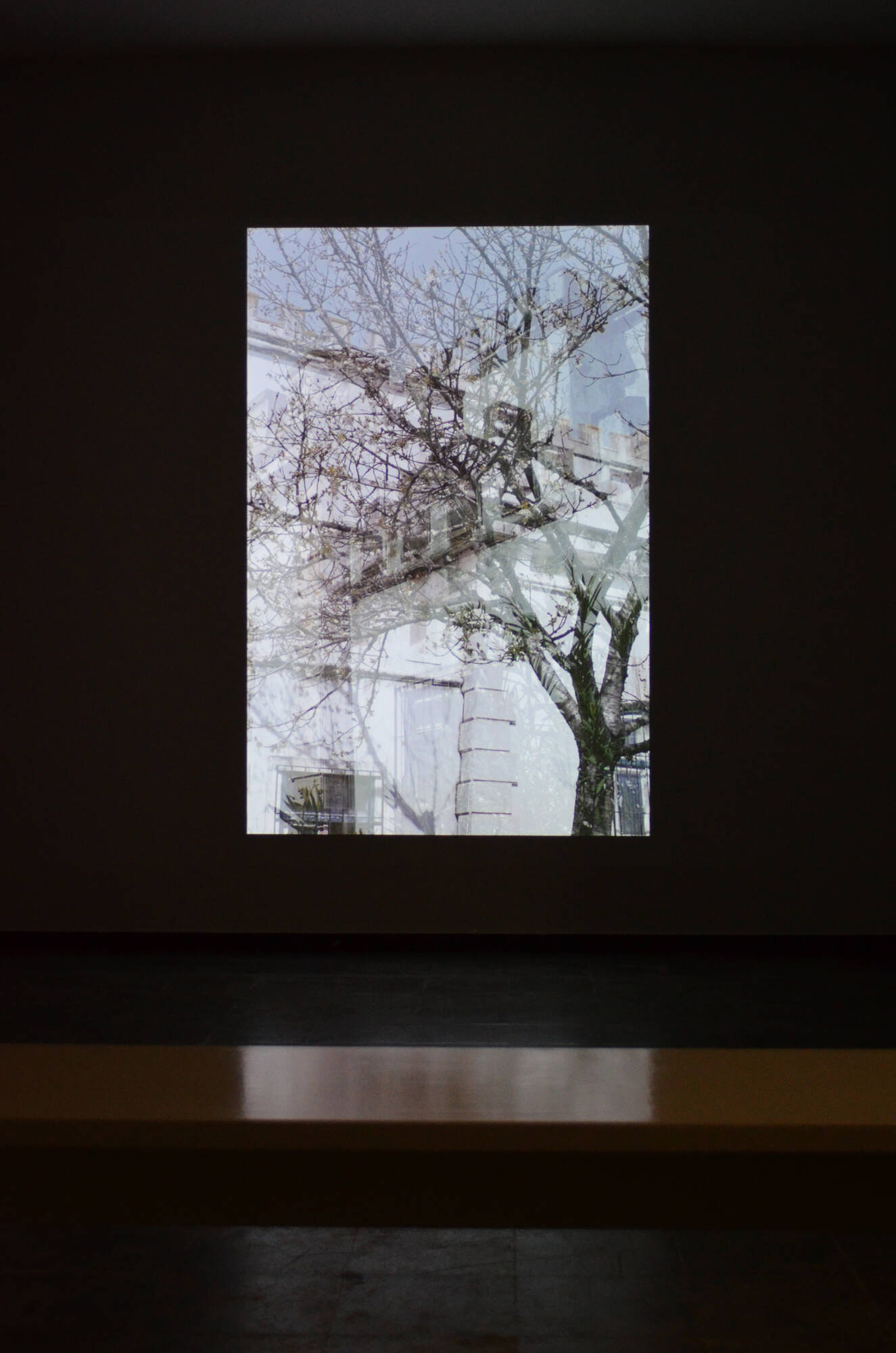
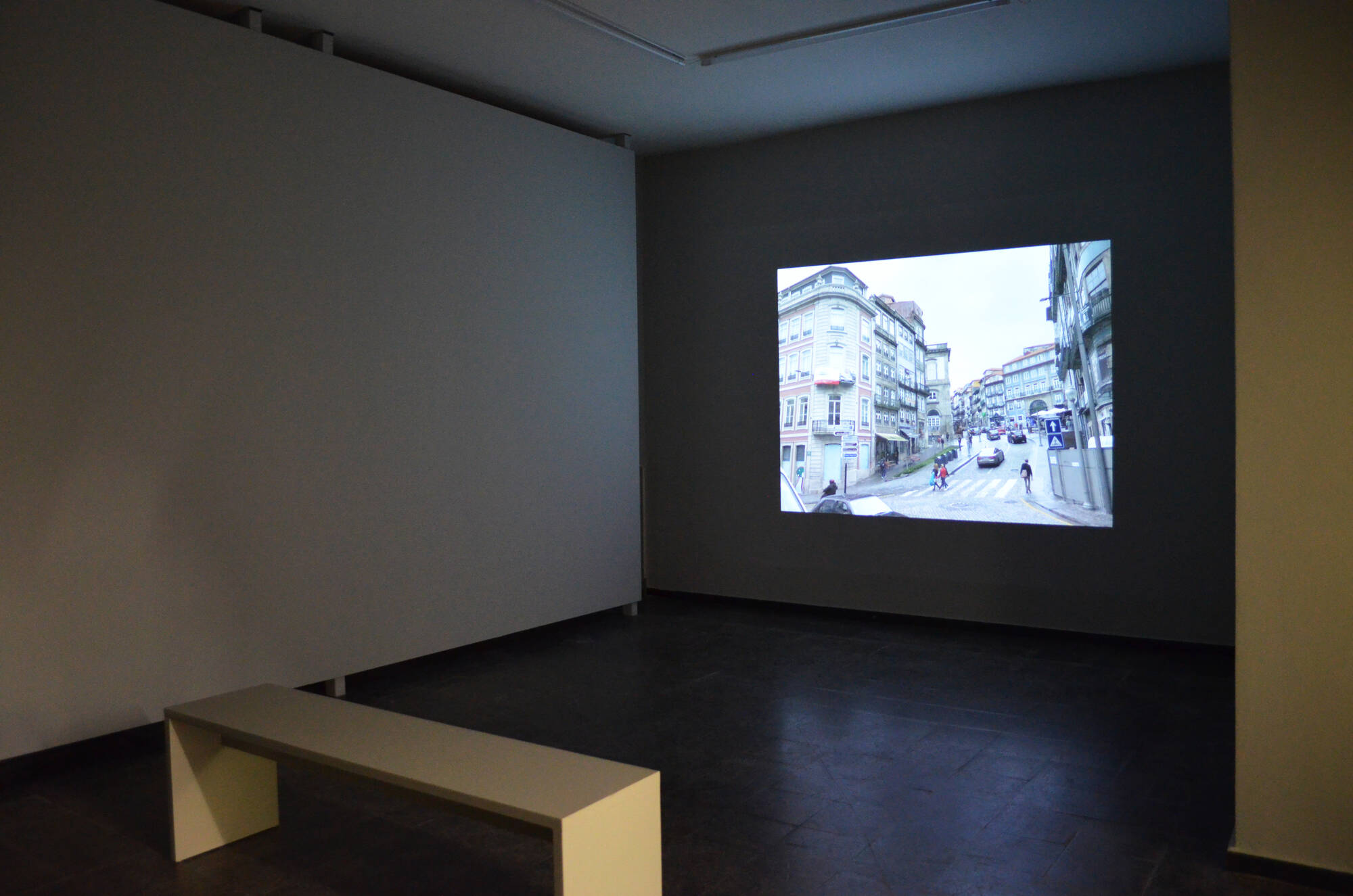
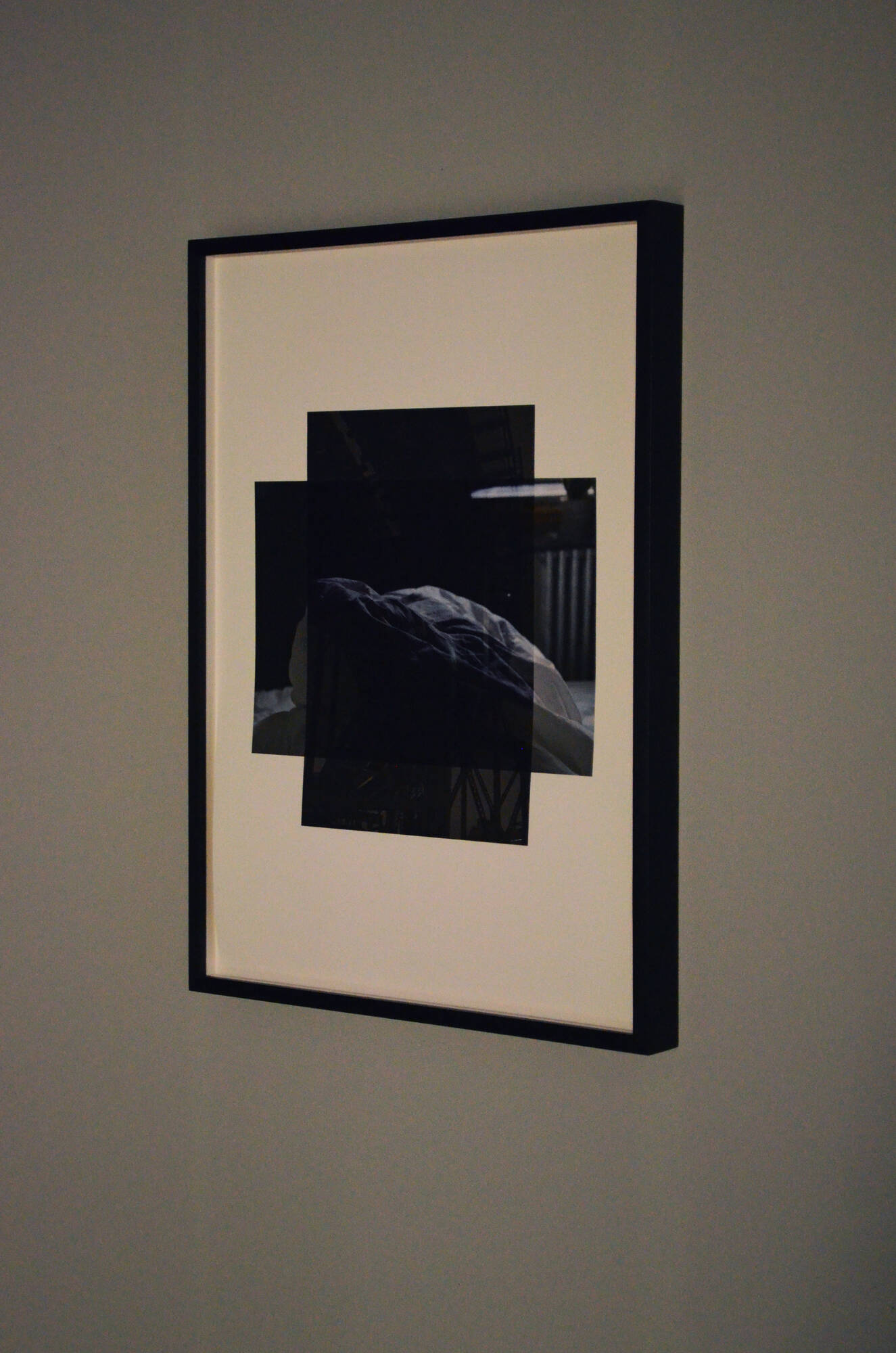
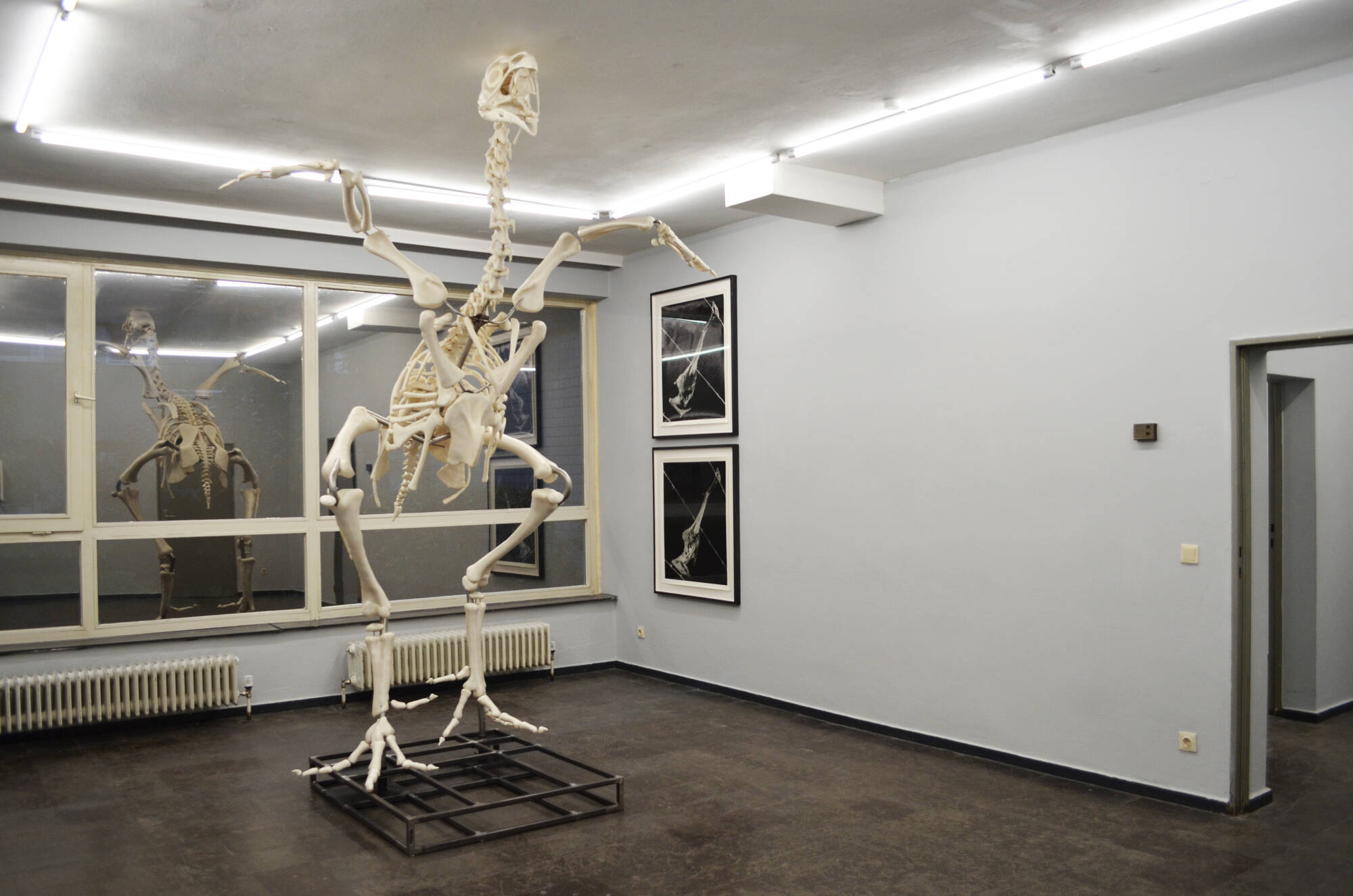
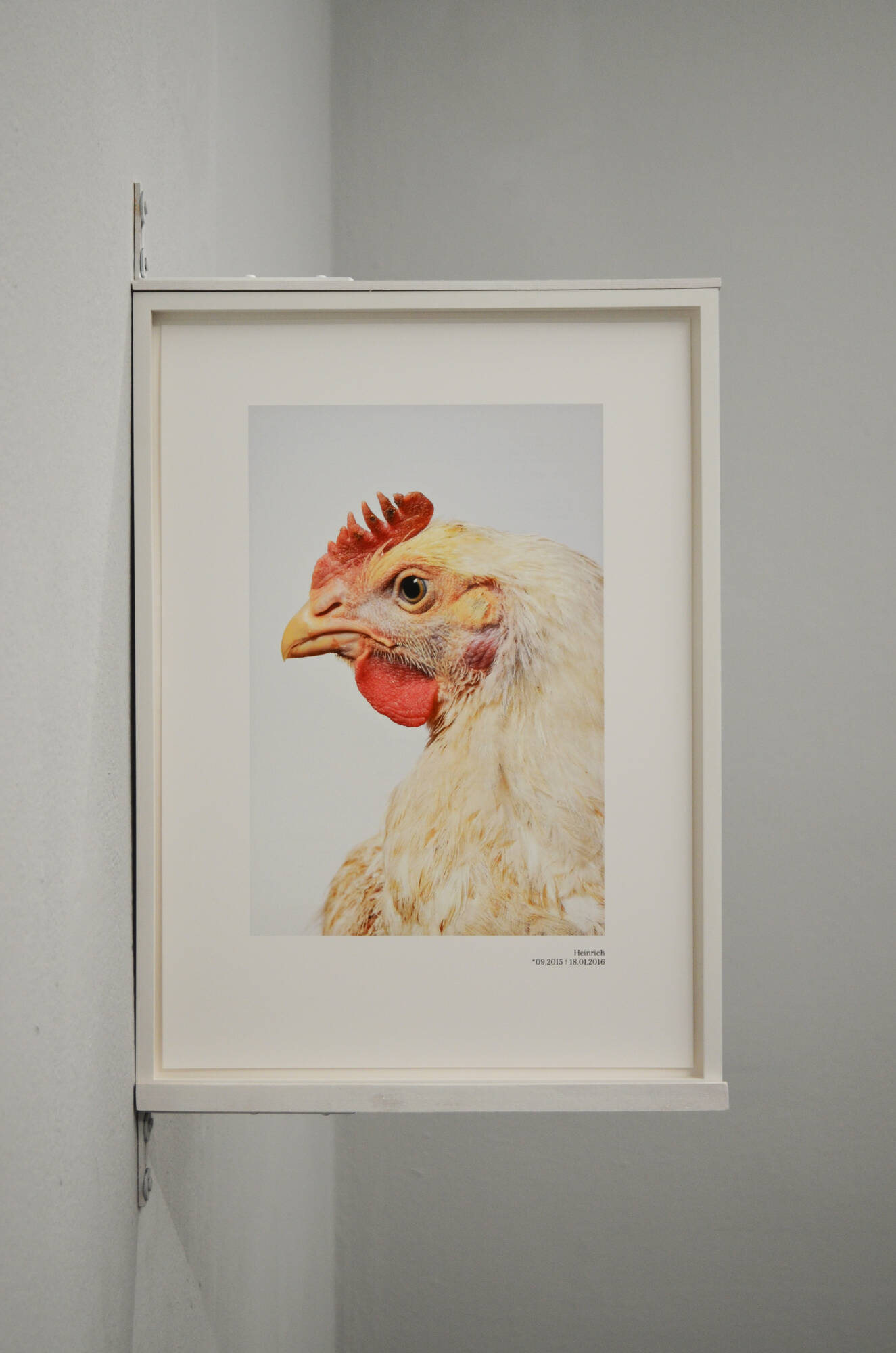
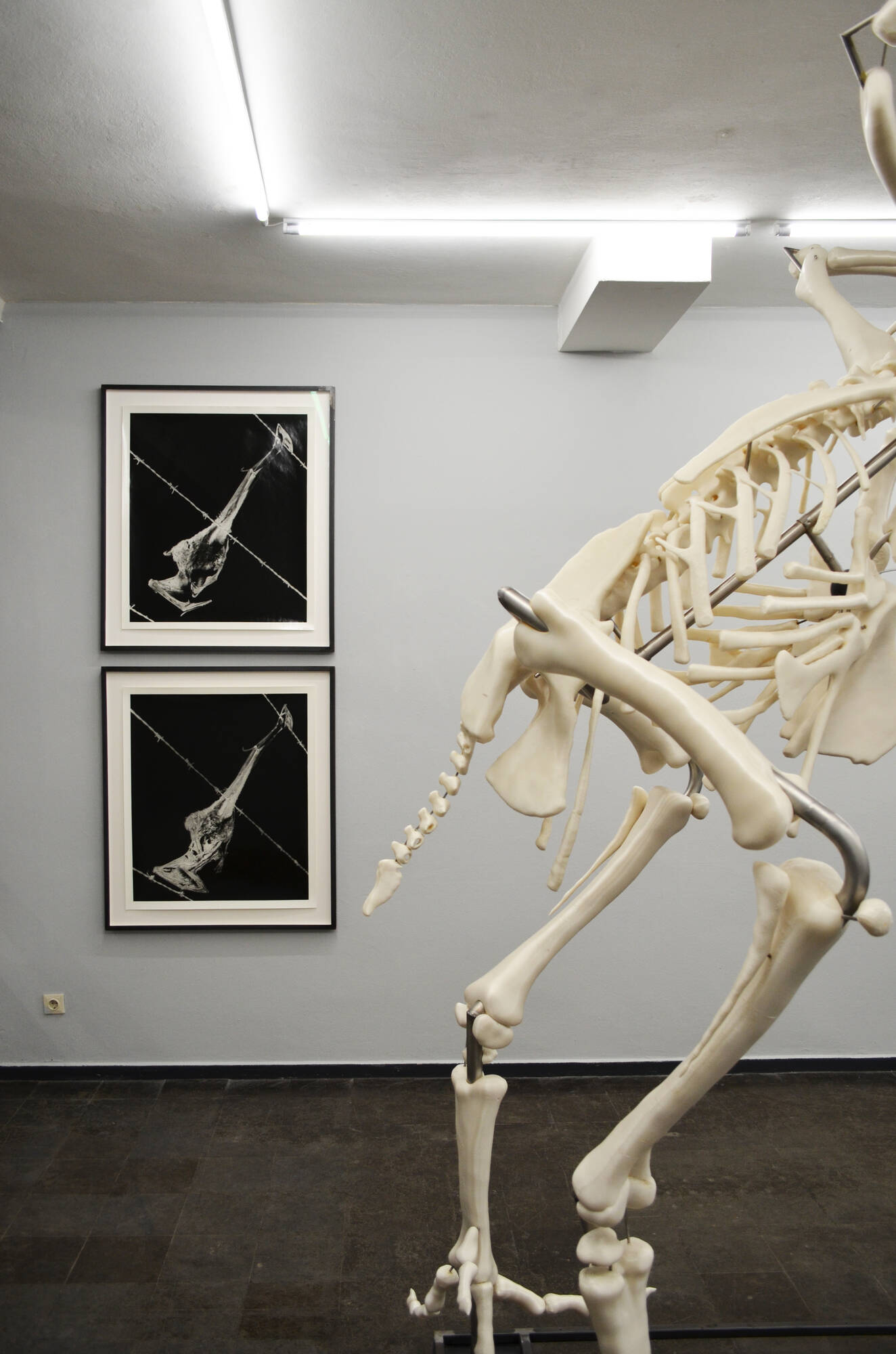
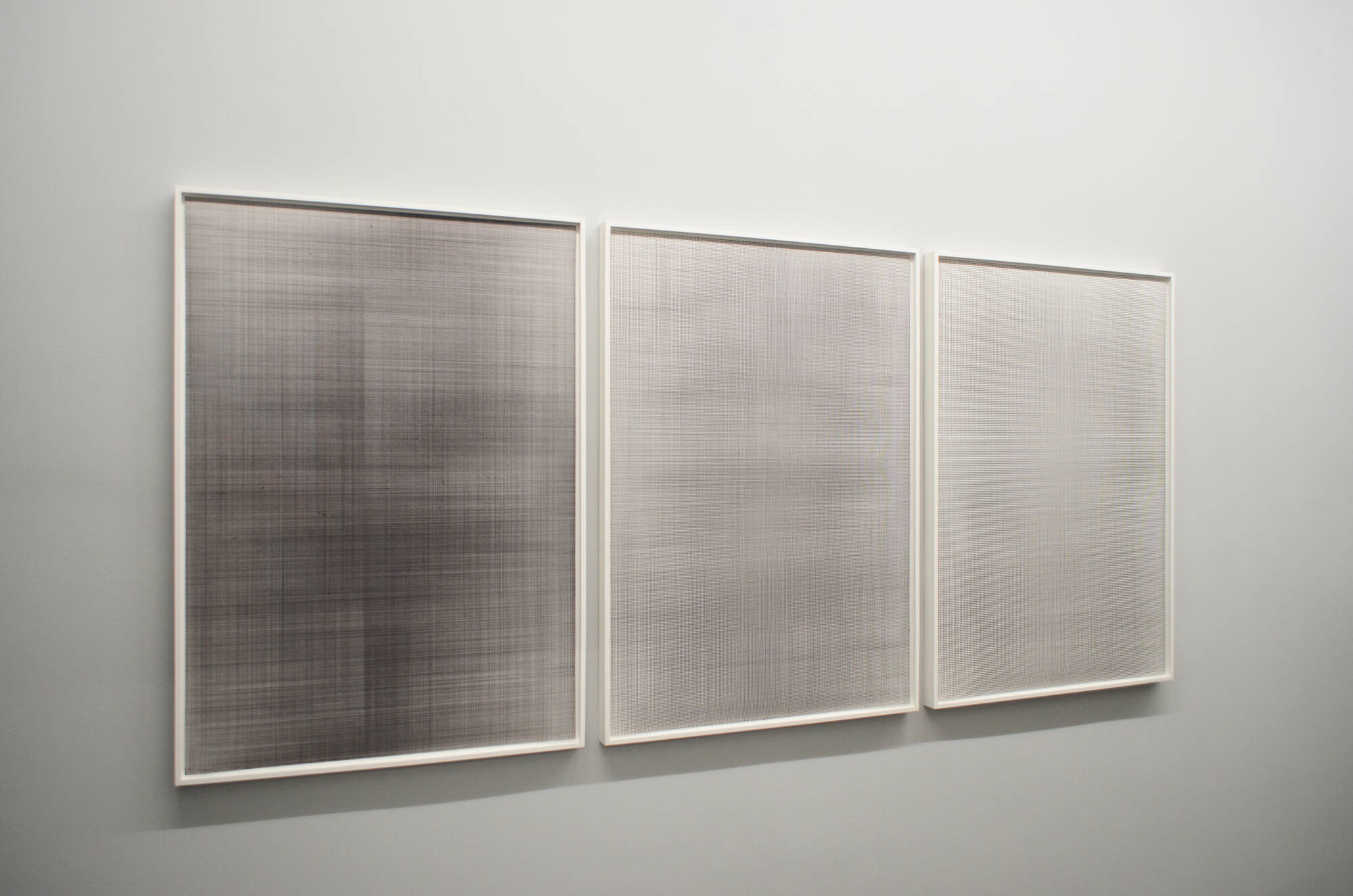
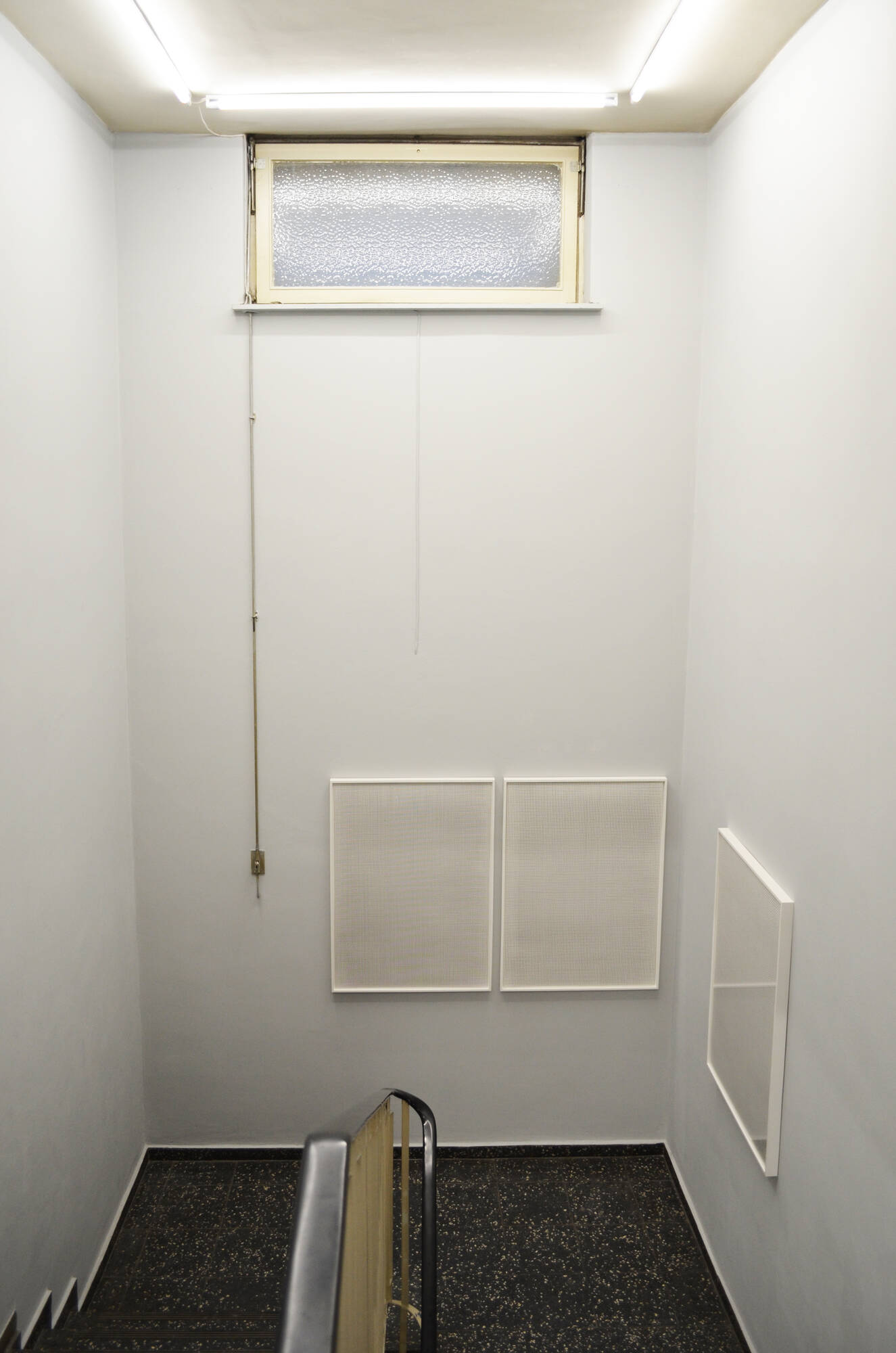
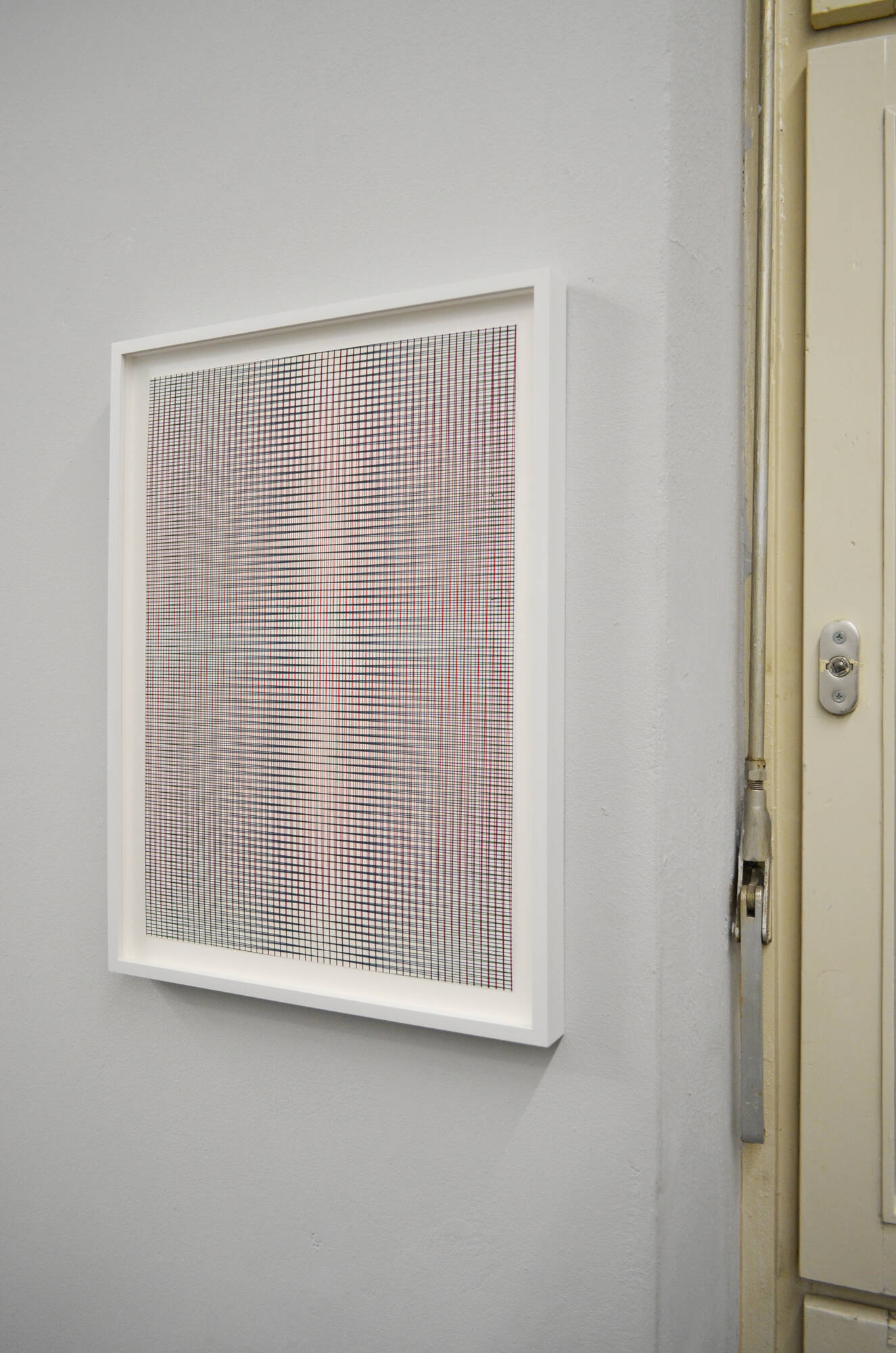
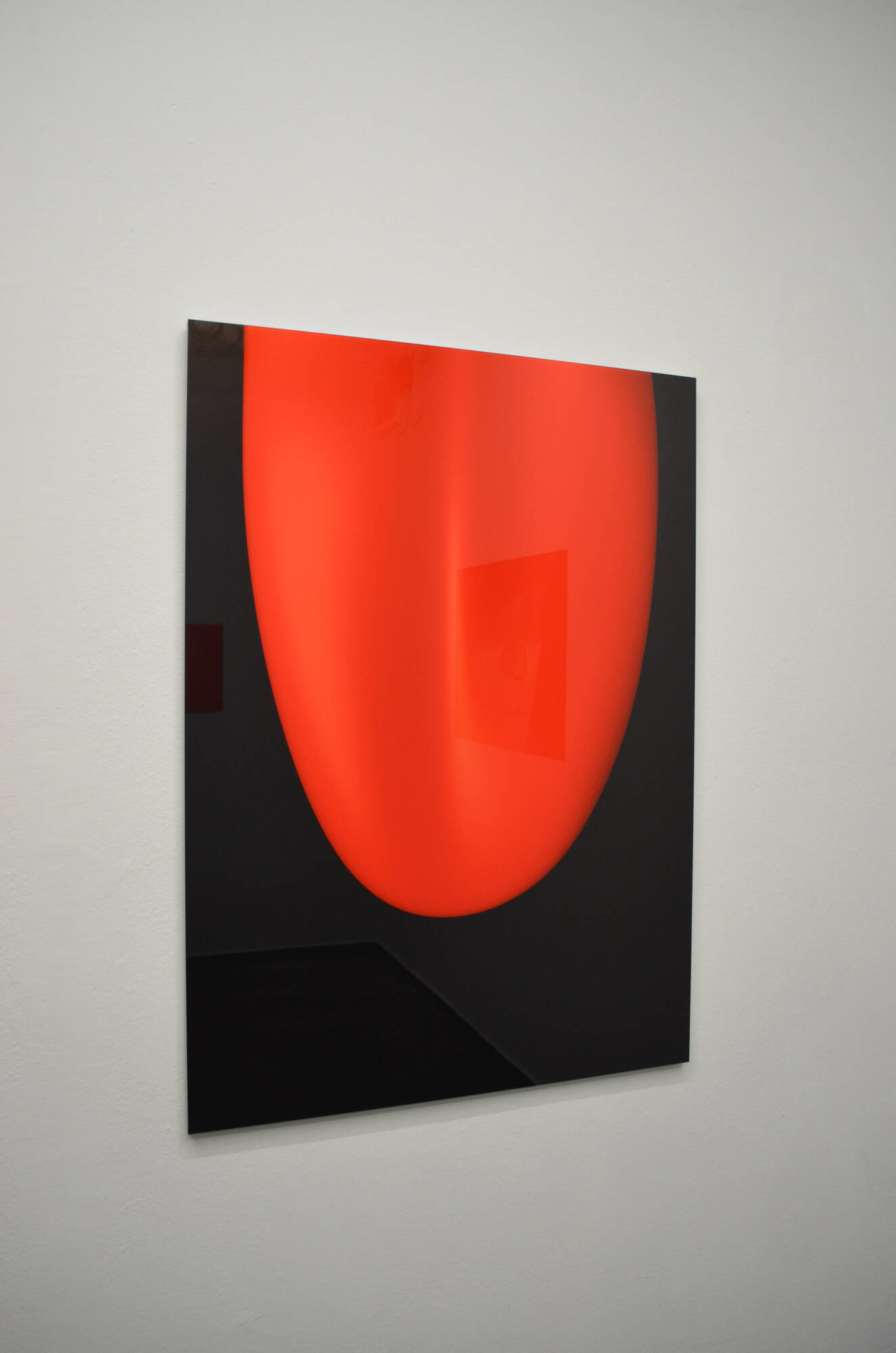
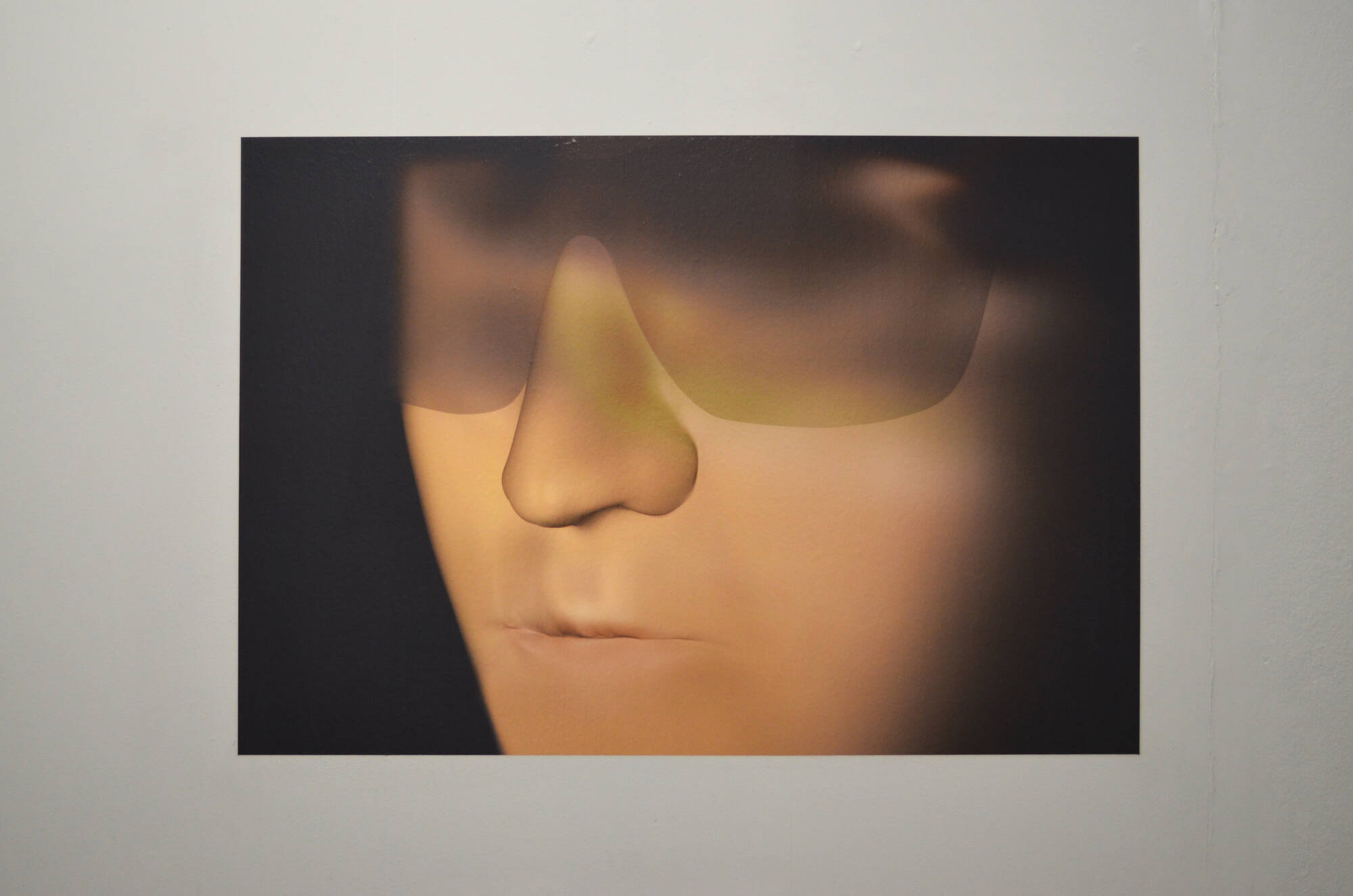
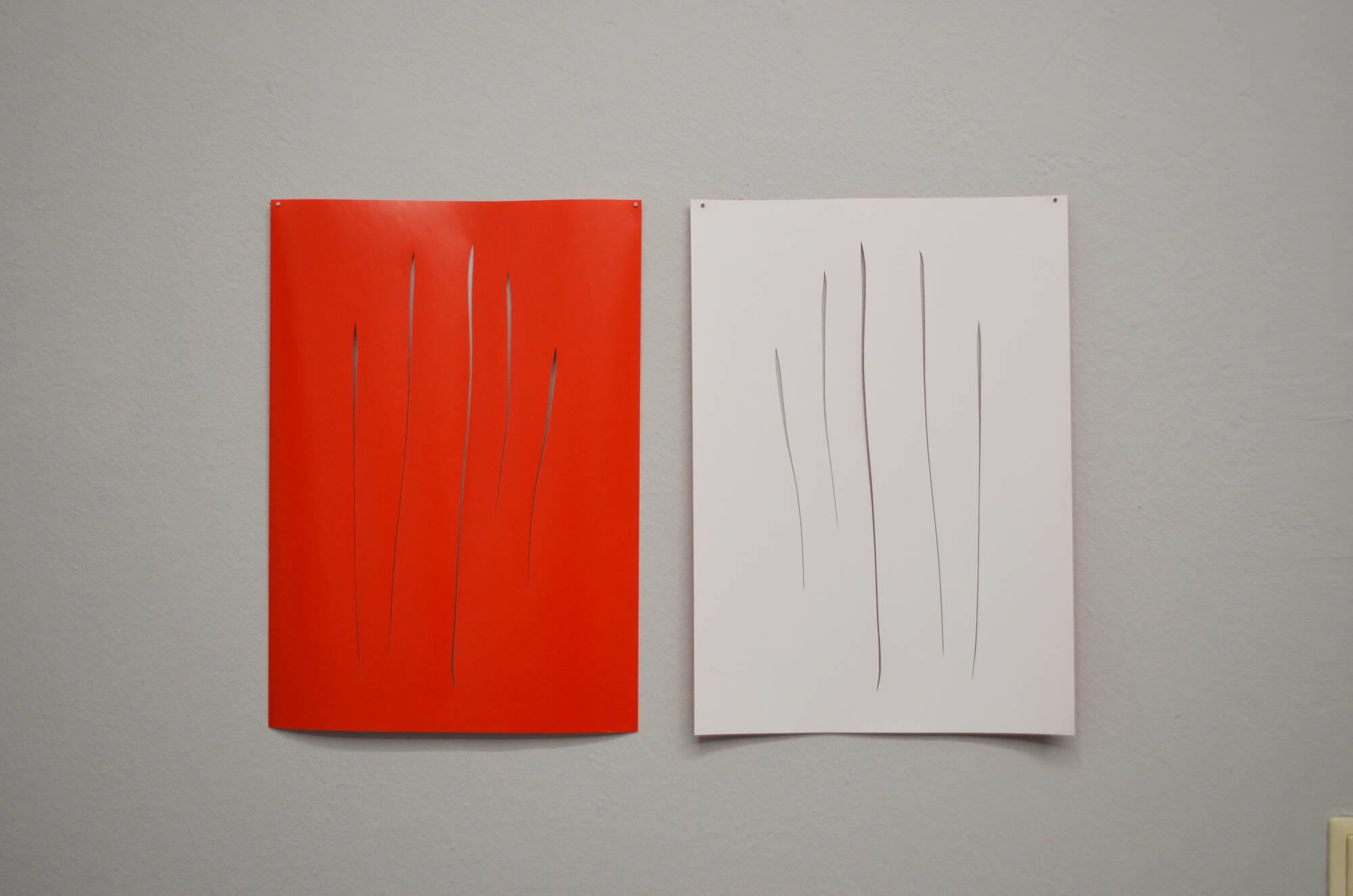
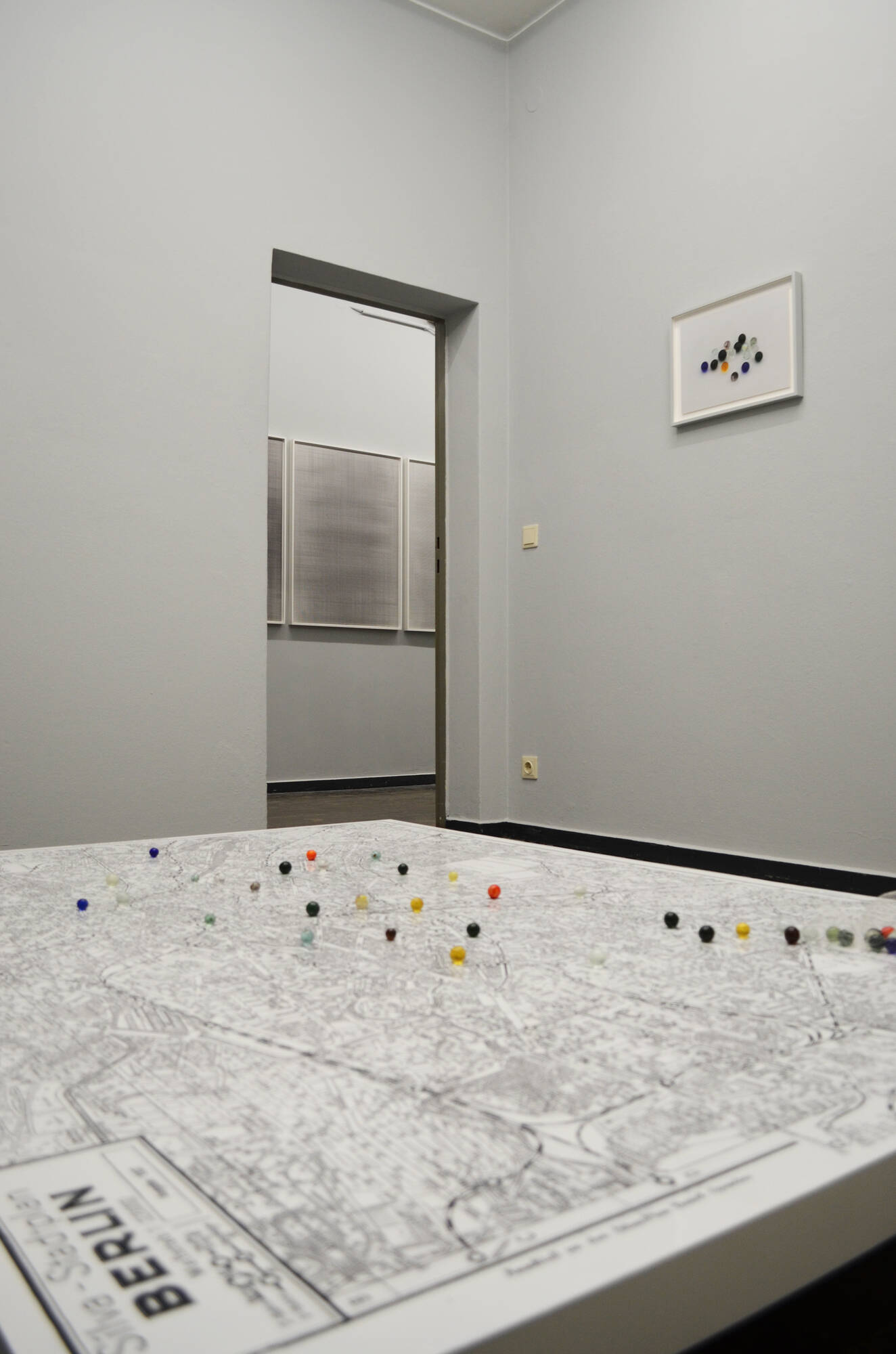
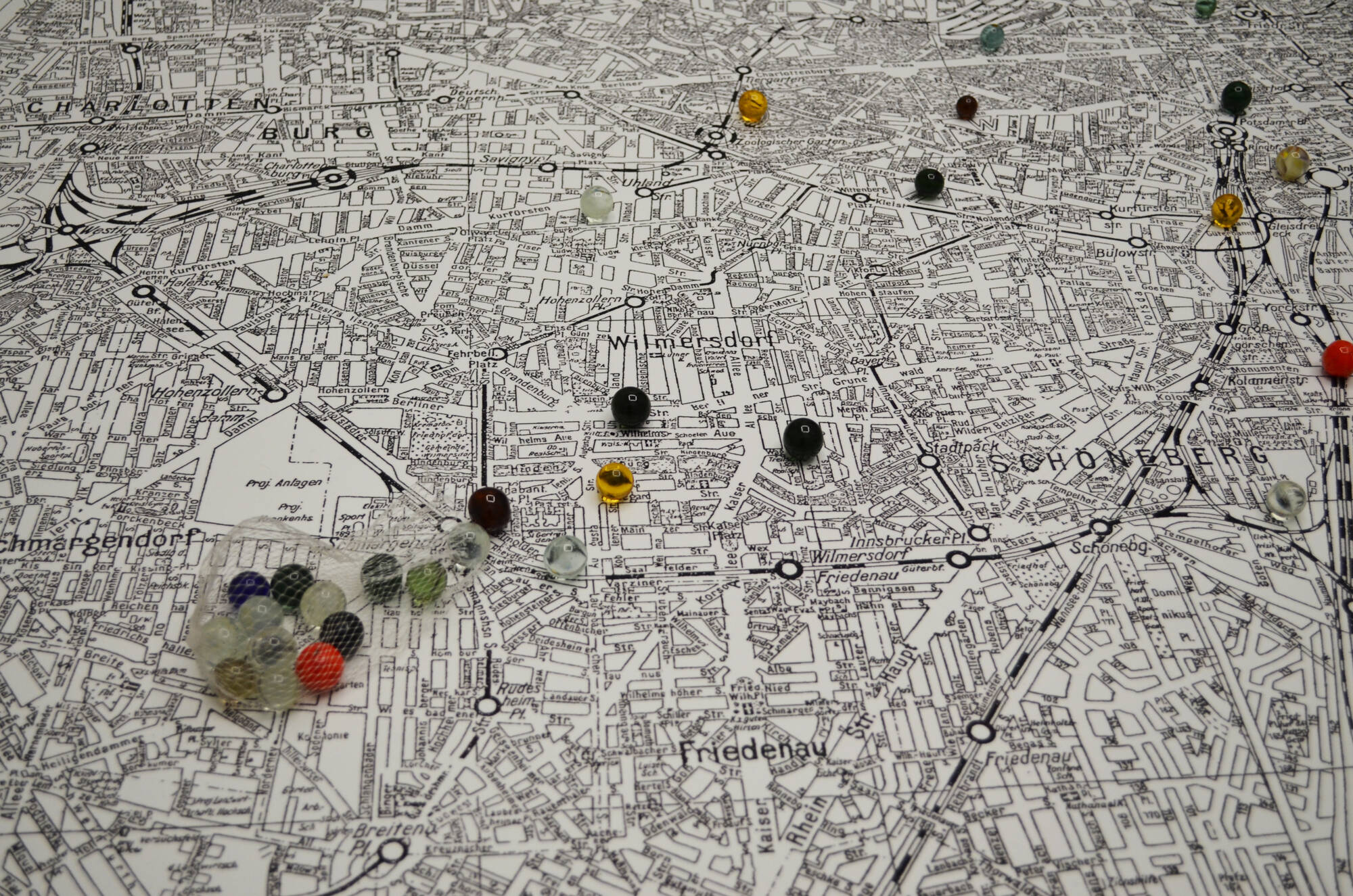
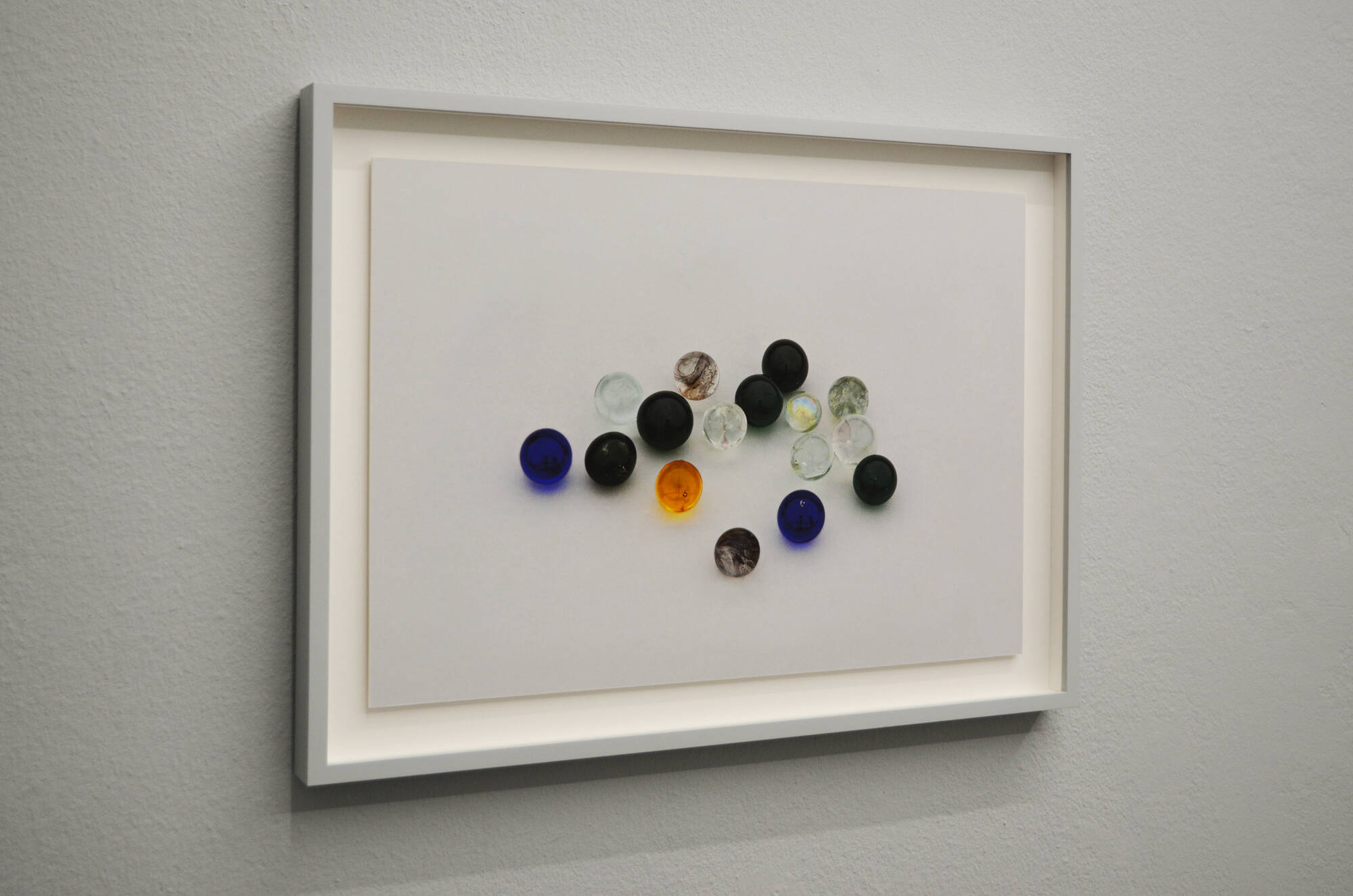
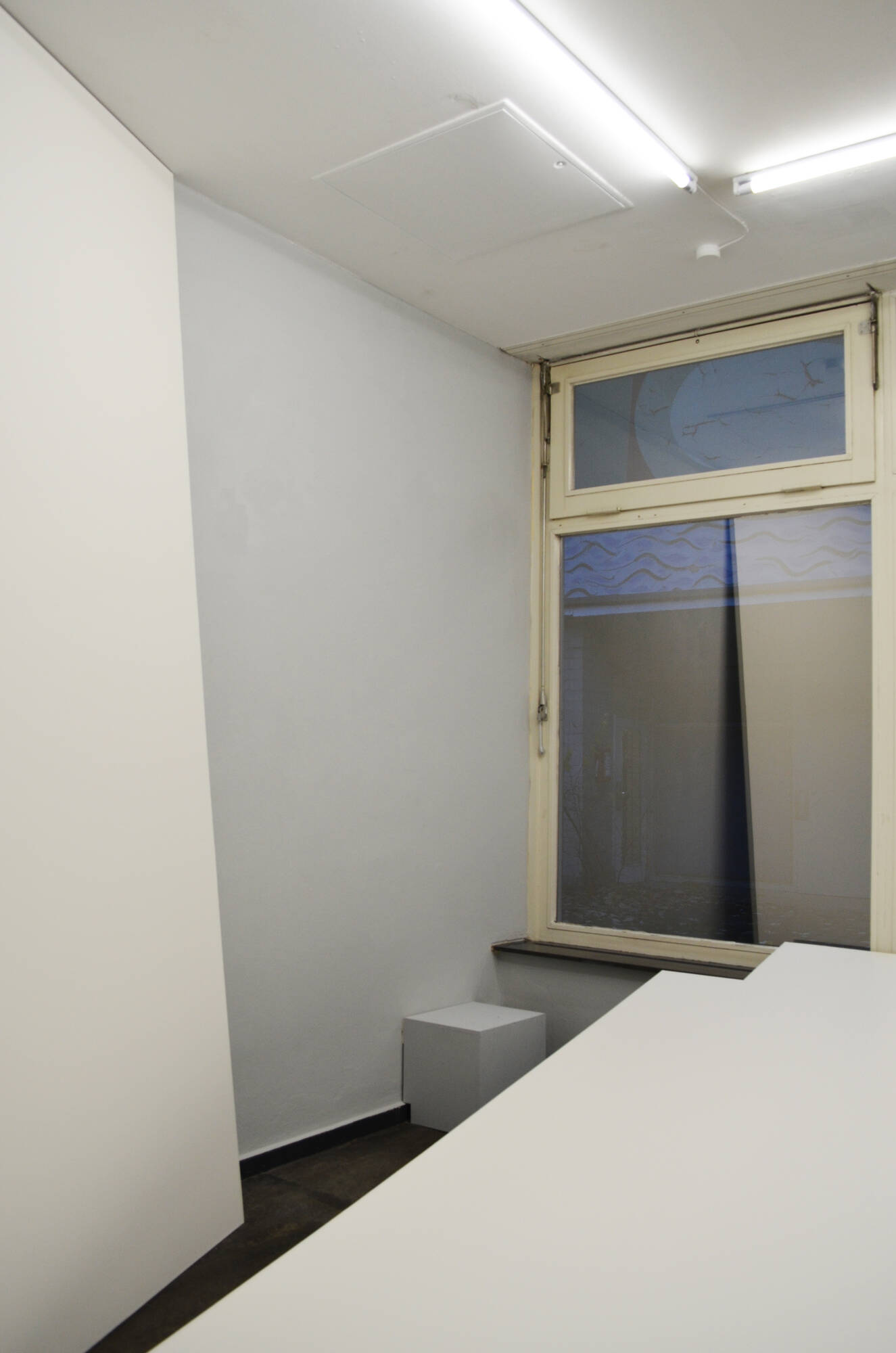
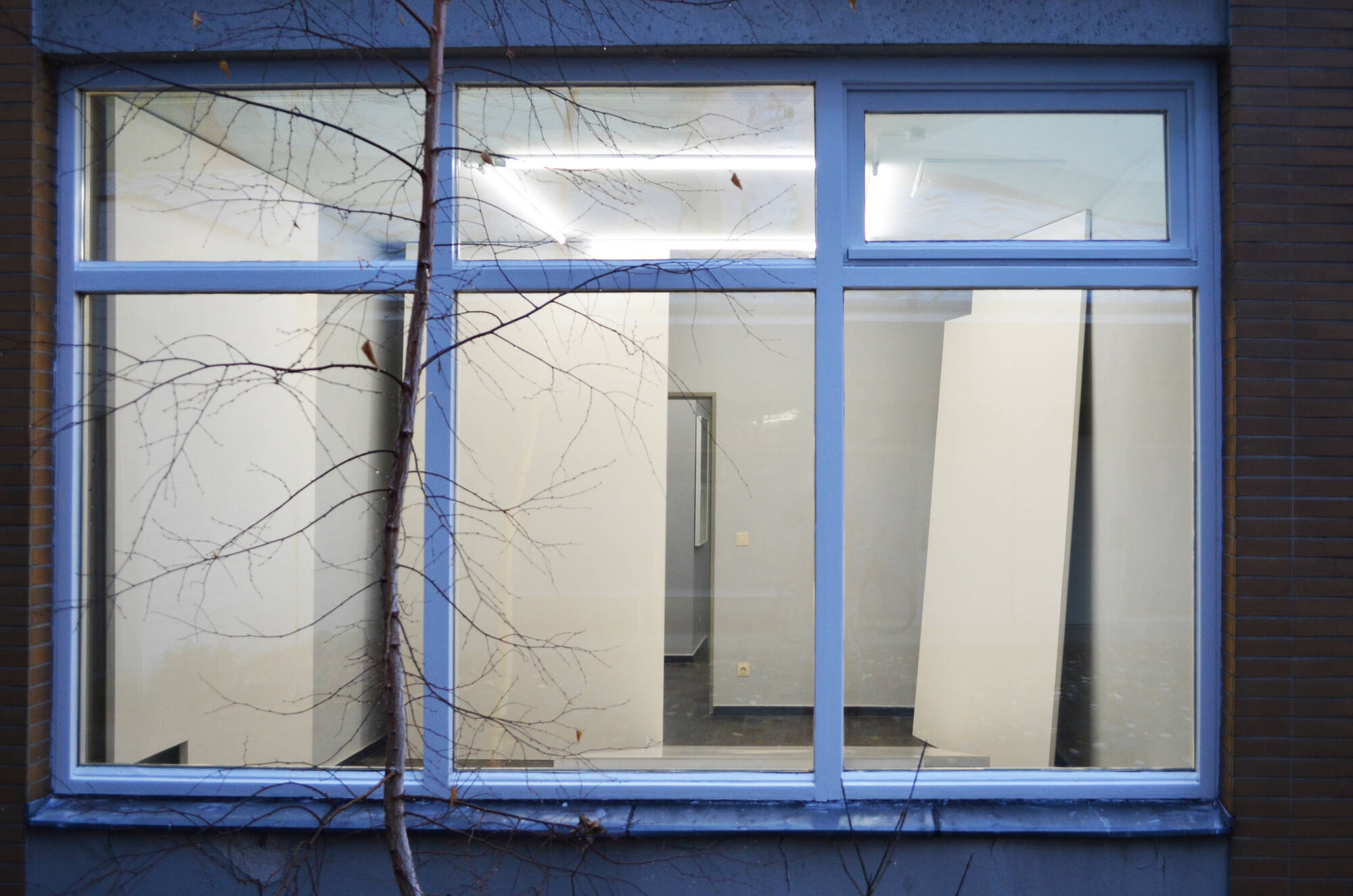
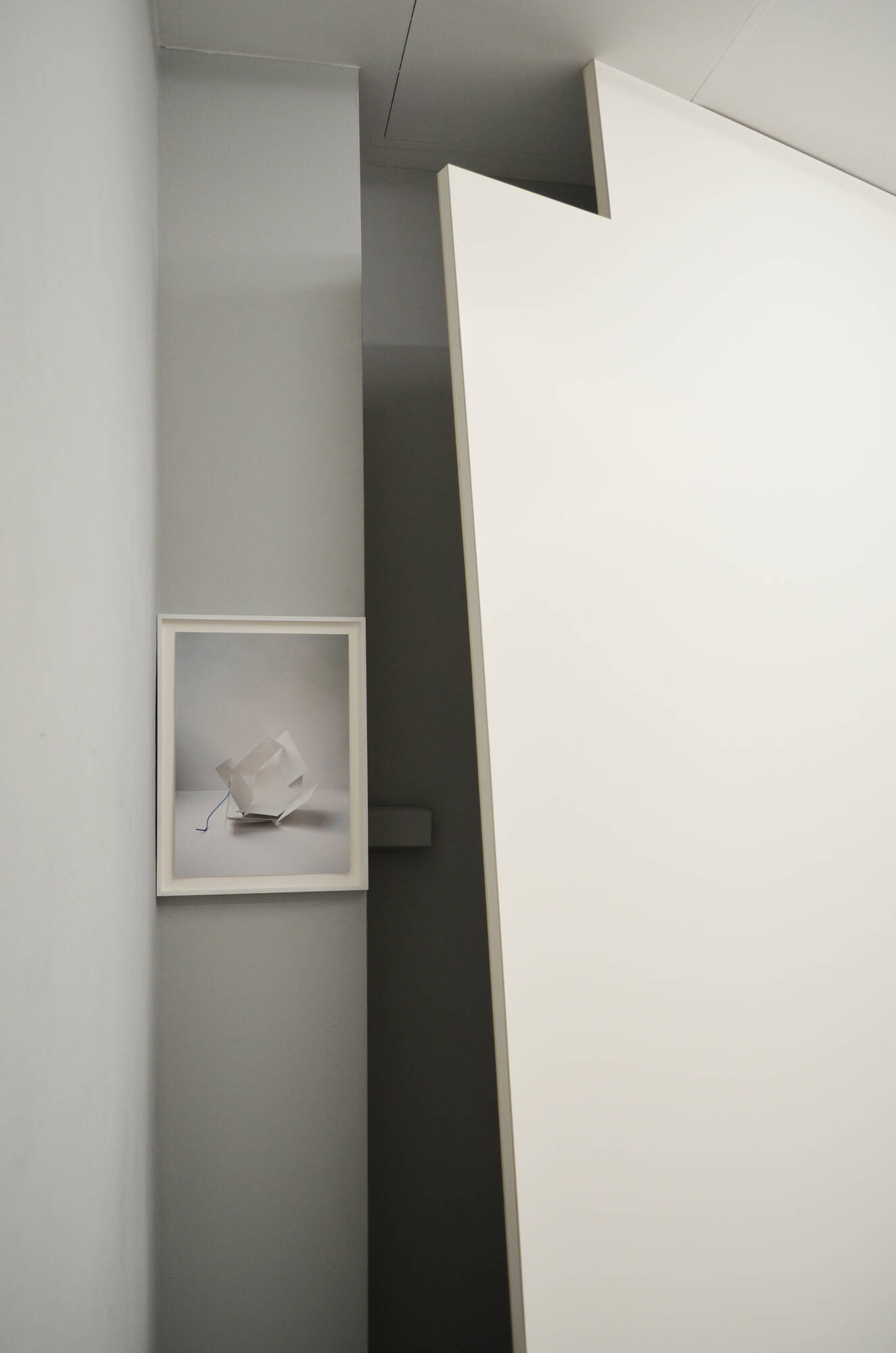
LIVING ABOVE THE LINES
+ EDITION #7
curated by Harald F. Theiss
Vernissage
Saturday 26 November 6 – 10 pm
Duration
26 Nov 2022 – 7 Jan 2023
Christmas Break
21 Dec 2022 - 3 Jan 2023
Opening hours
Wed – Sat 2 – 6 pm
and by appointment at office@frontviews.de
Free entrance
we recommend to wear a mask.
Location
Frontviews at HAUNT
Kluckstraße 23 A / yard
D - 10785 Berlin
Programme
Vernissage
Sat 26 Nov 6 – 10 pm
Seasons Special
Sat 10 Dec 4 - 7pm
INDEX Sunday Open
Sun 11 Dec 12 – 7pm
Finissage
Sat 7 Jan 7 - 9 pm
L I V I N G A B O V E T H E L I N E S
+ EDITION #7
Niklas Goldbach, Andreas Greiner, Claudia Kugler, Caroline Kryzecki, Philip Topolovac, Tilman Wendland
and Frederik Marks as a young artistic position
Concept and Text Harald F. Theiss | Curator
The boundaries of being and existing in life and in art are shifting and with them the choices and possibilities then, later, and now. The exhibition L I V I N G A B O V E T H E L I N E S reacts with different and related artistic positions to current events and their transformations - in and from our proximity. The title can be read in a deliberately ambiguous way and evokes diagnostic reflections on currently (unequally) controlled socio-political decision-making processes. At the same time, the conditions of general and artistic production as well as their preconditions are thematized. With a generally growing change of consciousness, future free spaces and orientation in dealing with things can be marked more sustainably.
Lines above or below surfaces or (critical) conditions are to be considered here as a conceptual pictorial metaphor. Through the "use" of various artistic means and media, rather, variations in the meaning of realities become visible: from universally known, politically or rhetorically coined terms red and green line, the not crossing of moral boundaries here and there, or the markings of lifelines, new (geographical) spaces for action, but also of more comprehensible and above all more responsible communication measures - not only in the everyday understanding. Based on this, the exhibition L I V I N G A B O V E T H E L I N E S in the compilation is an attempt not only to interpret such and other contexts or the relationship to the troubled present, but also to think further. At the same time, awareness of the future can be stimulated. The associative links lead to (critical) interrelationships of things - between the public, mediation, and perception. Already Bruno Latour referred to other forms of communication and information, which should reach and touch people more because scientific facts do not lead to a change of action. "If you want to develop an idea, the medium in which the idea is developed is not clear from the start.“ * Bruno Latour has repeatedly pushed the boundaries of what researchers actually do with theater or art.*
The line begins with the point and emerges from the movement. It creates mental and material connections and actions with very different tools, especially drawing tools. As an artistic expression in a variety of techniques and individual formal language, it is now more than just a graphic design tool of surfaces. Thus, it also takes us to other sites of artistic reflection from historical traces, science, and research to virtual and illusionistic materials. The artists in this exhibition are interested in processes of cognition and perception in the broadest sense. Their mostly interrelated installations stand on their own in the spaces, but can also be seen and experienced in dialogue with each other. Through site-specific explorations, the boundaries of what exists are explored. The architecture and spatial texture temporarily open up unexpected connections and, through them, forms of understanding that can be thought about further later and afterward or open up new perspectives ...
* Bruno Latour, Which Art for which Ecology ? Ein Beitrag von Hörspiel und Medienkunst, BR, 2013 1 https://www.br.de/radio/bayern2/sendungen/hoerspiel-und-medienkunst/artmix-galerie-182.html
Accompanying the exhibition and to support the cultural work at HAUNT, the participating artists Niklas Goldbach, Andreas Greiner, Claudia Kugler, Caroline Kryzecki, Philip Topolovac and Tilman Wendland will publish a specially produced EDITION #7 in a limited edition of 20 + 1 AP. For an annual donation for the upcoming exhibition program 2023, supporters will receive an edition sheet of their choice as a token of gratitude.
Niklas Goldbach
Album (cut together - cutting through) – Videostill, 2020 – ongoing
Edition #7, 2022 , 20 + 1 AP, Fine Art Print (Inkjet) on HAHNEMÜHLE PhotoRag Baryta 315g, 42 x 29,7cm
The video installation Album, 2022 (ongoing) by Niklas Goldbach is a form of immersive experience. The visual effects, accompanied by Photoshop, create a rush of image sequences. It is a visual and at the same time physical confrontation that requires a high degree of concentration and attention, in which the boundary between observation and artwork dissolves. In the middle of it all and unfiltered, Goldbach shows everything - one image every day since 2013 until the day of the presentation - taken with various professional and mobile phone cameras. In chronological order with a duration of two frames per second, he relentlessly stages and presents authentic contemporary life. As an artist, he combines the public with the private in an almost excessive manner. The seemingly unrestrained and rapid images are moving. They are reminiscent of videos from the club scene at the end of the carefree 80s and the beginning of the 90s - a life in excessive speed and in all the fast lanes. At the same time, Album also tells of the dissolution of the image and thus of boundaries and the past, without, however, losing sight of (digital) further development and always continuing to generate and record something new.
Niklas Goldbach was born in Witten, Germany. He studied sociology at the Universität Bielefeld, integrated media arts at Hunter College in New York City, and experimental media design at the Universität der Künste in Berlin, where he graduated in 2005 as a master student. He taught as a guest professor at the Universität der Künste in Berlin. He has received several travel and residence stipends, including a sojourn at the Villa Aurora in Los Angeles, and his work has been awarded prizes and exhibited internationally: at the Museum der Moderne in Salzburg, the Museo Reina Sofía in Madrid, the Mori-Art Museum in Tokyo, the Shanghai 21st Century Minsheng Art Museum, the Barbican Centre in London, the Kunsthaus Dresden, the Neuer Berliner Kunstverein n.b.k., the Cornerhouse in Manchester, the National Taiwan Museum of Fine Arts, Taichung, the Centre Pompidou in Paris, ZKM Karlsruhe, the public programs of documenta 14, the Internationale Kurzfilmtagen Oberhausen, the Berlinische Galerie and the Museum Ludwig in Cologne. The artist lives and works in Berlin.
Andreas Greiner
Heinrich (Untersuchungsbericht)
Edition #7, 2016 (2022), 20 + 1 AP, Fine Art Print (Inkjet) on HAHNEMÜHLE PhotoRag Duo 276g, 42 x 29,7 cm
A completely different scenario between art and science is developed by Andreas Greiner with fragments of his investigative research project Heinrich. The result is a multimedia portrait and will be updated with partly unpublished material on the occasion of this exhibition. Heinrich (Totus Corpus), 2015 is the name of a portrayed broiler chicken that the artist had bought from a large-scale factory and declared a "living sculpture". The specimen was a hybrid chicken species bred in industrial meat production for optimisation purposes, which later could not survive for long on the farm due to the intervention in the original anatomy of the animal. Greiner's conceptual work tells about these circumstances and puts the focus especially on the attempt to return the chicken to its natural state until its demise and the cause of death of the chicken. In doing so, the artist simultaneously documents man's exploitative attitude towards animals and his relationship to production, meat consumption and science - areas where boundaries or "lines" are crossed. The sculptural transformation Monument for the 308, 2017 is deliberately based on the skeleton of a primeval bird and is set into a new context as a contemporary monument with the number of the industrial chicken type in the title.
Andreas Greiner was born in Aachen, Germany He initially studied medicine and anatomy in Budapest and Dresden. Then he studied at the Dresden Academy of Fine Arts with Prof. Hans Peter Adamski and with Prof. Rebecca Horn and Prof. Olafur Eliasson at the University of the Arts, where he graduated as a master student. Andreas Greiner has received numerous awards, including the Prize for Young Art of the Neuer Aachener Kunstverein, 2014, the IBB Prize for Photography, 2015, the GASAG Art Prize of the Berlinische Galerie, 2016 and the Goslar Kaiserring Fellowship, 2019. He has exhibited at Mönchehaus Museum Goslar, Centre Pompidou, Paris, Witte de With, Rotterdam, Sprengel Museum Hannover, Art Center Nabi, Seoul, Meetfactory, Prague, Hessel Art Museum, New York, Museum of Applied Arts, Vienna, Kunsthalle Emden, Kunsthalle Hamburg, and Kunsthalle Bielefeld, among others. Since 2022 Andreas Greiner is a professor of media art at Muthesius Kunsthochschule, Kiel. The artist lives and works in Berlin.
Caroline Kryzecki
KSZ 50/35–109
Edition #7, 2019 (2022), 20 + 1 AP, Fine Art Print (Inkjet) on HAHNEMÜHLE Museum Etching 350g, 42 x 29,7cm
A unifying element in the exhibition spaces is the series B2, 2018 by Caroline Kryzecki. It not only marks the location, but develops a series of visual associations. The artist is known for her conceptual and process-oriented work with a limited number of colours. They are meticulously drawn horizontal, vertical and, in their interstices, diagonal lines with biros, which condense from a reduced guidance to increasingly impenetrable surface structures and in this way they work like a kind of graphic notation. In the field of tension between system and chance, disturbances occur on the paper surfaces. At the same time, the grid closes off the view between the lines and the levels behind them. On closer inspection, deviations can be seen in the black line repetitions or the drawn structures. They are important for the construction of the picture and create a flickering, the so-called moiré effect. The existing two-dimensional image begins to dissolve in favour of a three- dimensionality. Due to the composition on the sheets, variations of light and dark to merely shadowy atmospheric images are created, in which the original conceptual graphic strictness is seemingly cancelled and a virtually uncontrolled dynamic develops.
Caroline Kryzecki was born in Wickede/Ruhr, Westphalia, Germany. She studied communication design at the University of Applied Sciences in Düsseldorf and then fine arts in the classes of Daniel Richter, Anselm Reyle and Robert Lucander at the Berlin University of the Arts and postgraduated in the masterclass of Robert Lucander and Daniel Richter. She has had solo exhibitions at SEXAUER Gallery, Berlin (2020), Patrick Heide Contemporary Art, London (2019); Bernal Espacio, Madrid (2016); and Kunst & Denker Contemporary, Düsseldorf (2015), among others. Her group exhibitions include The British Museum, London (2022); Kunstsammlung Gera, Gera (2022); The Drawing Center, New York, (2021); Kunstverein Reutlingen, Reutlingen (2021); Studio Berlin, Boros Foundation at Berghain, Berlin (2021); PEAC Museum, Freiburg (2018); Kunsthalle Tübingen, Tübingen (2018); and David Nolan Gallery, New York (2017). In addition to numerous scholarships, Caroline Kryzecki's work was honored with the Valerie and Prof. Kurt M. Schulz - Schönhausen Award (2018). Artist residencies include among others CCA Andratx, Mallorca, Spain (2020), The Josef and Anni Albers Foundation in Connecticut, USA (2019), and Istanbul, Turkey (2012). Kryzecki is represented by SEXAUER Gallery, Berlin. The artist lives and works in Berlin.
Claudia Kugler
scroll
Edition #7, 2017 (2022), 20 + 1 AP, paper cut, 42 x 29,7 cm
The boundaries of seeing are also expanded in Claudia Kugler's computer-generated graphic compositions. With her aesthetic posters, wall tattoos or images produced using the Diasec process, she transcends formal and creative limitations despite (pop) cultural and art-related references. Only at first glance do the very precisely constructed and mostly colourful motifs appear featureless and somewhat ambiguous. Between abstraction and figuration, they are a mixture of digital found objects, inventions or self-photographed. When assembled, Kugler's images become visual commentaries on timeless explorations in the here and now, almost literally not only penetrating space (scroll, 2017) but simultaneously pointing (np(3), 2018) to future-oriented perspectives within the existing. Their formally reduced images are not entirely free of ironic gestures (np(1), 2018) and in this way allow a variety of pleasurably subversive associations and interpretations - beyond material and technical conditions or localisations.
Claudia Kugler was born in Auerbach, Germany. She studied communication design at the Fachhochschule in Nuremberg and graduated as a Meisterschülerin (master student) in 2002 at the Akademie der Bildenden Künste in the same city. Her works have been exhibited in numerous galleries, including in Düsseldorf, Cologne, Vienna, London, Basel, Berlin and Los Angeles. Among other her works are part of the Kienzle Collection Berlin. The artist lives and works in Berlin where she also runs a graphic design studio.
Frederik Marks
Beneath the dead bird pt1.
2022, photograph, 90x103cm
Beneath the dead bird pt2.
2022, photograph, 90x103cm
With his two-part photograph Beneath the sun of the dead bird, 2019, Frederik Marks responds on site to the work of Andreas Greiner, which vividly depicts a situation of endangered creatures. They are part of a series of works based on Deleuze and Guattari's work Schizoanalysis, which, among other things, describes ways to reconstruct one's own subconscious. The boundaries drawn by humans in the landscape for protection or disturbance in the natural ecosystem become a trap for animals. The fence interrupts their intense sense of orientation and becomes invisible to nocturnal creatures. Their death can be seen as an interpretation for instinctive behavioural changes in the context of the Conditio Humana or the conditions of man and at the same time his knowledge about life. The title refers to Michele Houellebec's future-oriented novel The Possibility of an Island (2005) and reads there in full in the English translation: „Beneath the sun of the dead bird spreads infinitely the plain there is no death more serene: show me some of your body“. Between photography and sculpture, Frederik Marks constructs works that distort our perception of time and dimension. Thematically, he deals with the moment of death and the instability of memory, from which a mystically morbid visual language emerges.
Frederik Marks was born in Bochum, Germany. After graduating from London College of Communication in 2020, he joined the Berlin based collective Visual Wellness. Frederik Marks has been nominated for several awards, including the “Youth” shortlist of the Sony World Photography awards 2017, and last year’s Palm* Photo Prize. Currently he is part of a residency organised by Culterim Gallery situated in a former bunker in Charlottenburg. The artist lives and works in Berlin.
Philip Topolovac
Murmeln
Edition #7, 2013 (2022), 20 + 1 AP, Fine Art Print (Inkjet) on HAHNEMÜHLE PhotoRag Ultrasmooth 305g, 42 x 29,7cm
Philip Topolovac's real finds mostly have a historical reference. He makes his archaeological discoveries on building sites, the present-day "excavations" of urban fields that are being cleared for future new construction. They are mostly fragmentary objects or remains from the Second World War, which were melted down and deformed by the fires in Berlin. By means of artistic craftsmanship, material is once again transformed and thus reused, but also re-evaluated, not only of the mostly simple things or materials. The glass found from rubble and melted down is shaped into a certain number of different coloured marbles, 2015. Arranged on a historical map of Berlin, a cartography of past locations is created, which in this way follow other (aesthetic) principles and lines. They create a relationship and interactions with the immediate surroundings. At the same time, history of hidden reality becomes visible and retold.
Philip Topolovac was born in Würzburg, Germany. From 2001 to 2008 he studied at the Universität der Künste in Berlin with Christiane Möbus. The artist achieved international recognition with I've never been to Berghain (2016): a detailed reconstruction of the legendary Berlin club Berghain. Recently his works have been displayed at the Deichtorhallen in Hamburg and the Kunstverein Bayreuth as well as at the Kunsthal Rotterdam, the Design Museum, London, the Cité de la musique, Paris, and the Vitra Design Museum, Weil am Rhein. His works may be found in such places as the Julia Stoschek Collection in Berlin and Düsseldorf, the Gladstone Gallery in New York and Brussels, and the Deutsches Architekturmuseum in Frankfurt. The artist lives and works in Berlin.
Tilman Wendland
untitled (Haunt)
Edition#7, 2022, 20 + 1 AP, Fine Art Print (Inkjet) on HAHNEMÜHLE PhotoRag Ultrasmooth 305g, 42 x 29,7cm
A different effect of visual language forms is developed by the temporary thinking space of Tilman Wendland. His site-specific and space-immanent installation not only alters existing structures but also examines the anatomy of human consciousness - in particular how the elements of lines, surfaces and forms are perceived and can thus lead to new perspectives or a change in the direction of things in art and in life when viewed. With simple materials and standard products, unexpected relationships between the built objects and spatiality emerge, which can be further thought about in the present via visual forms, because they function as echoes of places. Wendland's sculptural adaptation of space is based on a model by György Kepes (1906-2001), a student and friend of Laszlo Moholy - Nagy. With his grammar and syntax of the new language of seeing, he liberated art from the ballast of the past with the intention of stimulating people to positive social action and to grasp reality in the new language. "What is true about verbal languages is also true of visual "languages". We match the data from visual experience with stereotypes of one kind or another, according to the way we have been taught to see." (György Kepes, Language of Vision. Dover Publ. 1995. S. 9) The possibilities and perceptions beyond gravity are also the subject of Wendland's intervention in space - redefining it and at the same time making it part of his art.
Tilman Wendland was born in Potsdam, Germany. He studied visual communication at the Berlin University of the Arts (1992–1999, Meisterschüler). From 2010 to 2012 he taught there as an adjunct lecturer and from 2014 to 2017 as a visiting professor for sculpture. In 2019, he took on a teaching position in the Time-Based Arts class at the Burg Giebichenstein School of Art in Halle. Recent exhibitions include “Standard Canvas”, Lusvardi, Milano; “Feel Free”, SCOTTY, Berlin; “Jubilee X”, Frontviews at Haunt, Berlin; “Trash to Impress”, Polarraum, Hamburg (2022). Further exhibitions: “The Echoing of a Sound Reveals the Size of the Room You Are In”, with Lise Harlev, Bonamatic, Copenhagen; “Rebound Rotation”, HaL Haus am Lützowplatz and “Rotation Rebound”, HaL at IG Metall Haus, Berlin both with Susanne Lorenz (2021); “Where the Trees Have Numbers”, Frontviews at Haunt, Berlin; “0+255”, Studiogalerie, Haus am Lützowplatz, Berlin; “Abwesenheit”, New Viewings, online, Gallery Barbara Thumm (2020); “Enclaves”, Apparatehaus Monopol, Berlin (2019); “Spatial Manifestation #5”, Standard International, Glint, Berlin; “Perfect Match”, Schau Fenster, Berlin and “Sensorium”, RIBOCA1, 1st Riga Biennial of Contemporary Art (2018); “Odyssee”, Kunstverein Arnsberg, Möhnesee (2017). The artist lives and works in Berlin.
de.wikipedia.org/wiki/Tilman_Wendland
Frontviews at HAUNT
Kluckstraße 23 A / yard
D - 10785 Berlin
Free Entrance
Public Transport
Bus Linie M48 or M85 from Potsdamer Platz/ Busstop
Lützowstr./Potsdamer Str. and a 4 minute walk // U-Bahn
Kurfürstenstraße Linie U1 and U3 and a 6 minute walk // M29 Busstop Gedenkstätte Dt. Widerstand and a 2 minute walk.
Web / Social Media
www.frontviews.de
www.hauntberlin.de
IG @frontviews_berlin, @haunt_berlin
related links
Niklas Goldbach
Andreas Greiner
Caroline Kryzecki
Claudia Kugler
Philip Topolovac
